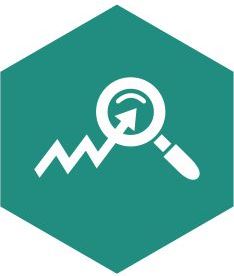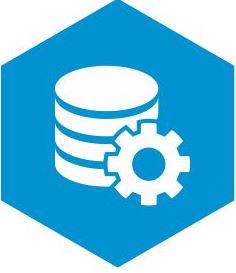CS::BI - a full-featured business intelligence (BI) solution to provide an enterprise with comprehensive reporting, visualization and business analytics.
Combining Data Warehouse and Analytical System, CS::BI enables integration of several data sources into a single coherent framework for the fastest surfing throughout the organization's data. Based on Oracle Business Intelligence Platform, CS::BI empowers users with real-time reporting and in-depth business analysis.
CS::BI enables an organization detailed analysis by any parameter, including customers, employees, operations, etc.
The system streamlines and enhances data collection, consolidation, exploration and visualization to provide users throughout the extended enterprise with the ability to gain insight into the organization's business and operations.
1. Key Performance Indicators (KPI) - Return on assets (ROA) and Return on equity (ROE)
- Interest income and expense, net interest income
- Commission income and expense, net fee and commission income
- Trade result, administrative costs, other profit and loss, provision (reserves)
- Net profit
- Cost Income Ratio (CIR)
- Yields on interest-bearing assets
- Costs of interest-bearing liabilities
- Interest spread, interest margin
- Central bank requirements
|  |
2. Assets and liabilities portfolios - Loan portfolio as of the date and its evolution
- Deposit portfolio as of the date and its evolution
- Current accounts
- Securities
- Fees and commissions
- Loan Loss Provision
- Collaterals, collateralized loans, loan-to-value ratio, revaluation diagrams
- Collateral protection insurance
- Currency buying and selling, etc.
|  |
3. Risk analysis - Liquidity risks monitoring, GAP analysis
- Credit risk monitoring:
- customer’s credit history, overdue payments, first-rate debtors, maximal overdue period
- 3 DPD (Days Past Due) algorithms: FIFO, LIFO, IFRS
- Roll-Rates, Vintage analysis
- IFRS Loan Loss Provision (Reserves), i.e. Days Past Due, Probability of Default, Lost Given Default, Weighted Collateral Value, Exposure at Default, Loan Lost Provision - Forex risk monitoring
- Interest rate risk monitoring
|  |
4. Card management and operations analysis 5. Customer database analysis 6. Ledger analysis |  |
7. Profitability and managerial analysis- Transfer pricing
- Credit true cost calculation based on transfer pricing
- Assets funding with total liabilities for a reporting period
- Internal costs accounting (direct cost classified by business types)
- Cascade cost allocation (absorption costing)
- Salary cost allocation by branches, budget items, financial responsibility centers
- Fixed assets amortized cost allocation by persons using fixed assets
- Telecommunication services cost allocation by provider rolls
- Trade result separation from Forex cash between Treasury and branches
- Deferred money transfer commission income allocation by branches
|  |
8. Data analysis via Oracle Data Mining for common factors search in large amount of data - Wide range of methods for intellectual data analysis models building and estimation among which:
- classification;
- regression;
- clustering;
- association;
- anomalies detection;
- available attributes search and detach. - There are some algorithms for solving classification tasks:
- decision trees;
- Naive Bayes classifiers;
- General Lineal Models (GLM);
- Support Vector Machines (SVM).
|  |






